Lifestyle Properties Dallas, TX: Important Facts that you Should Take into Account
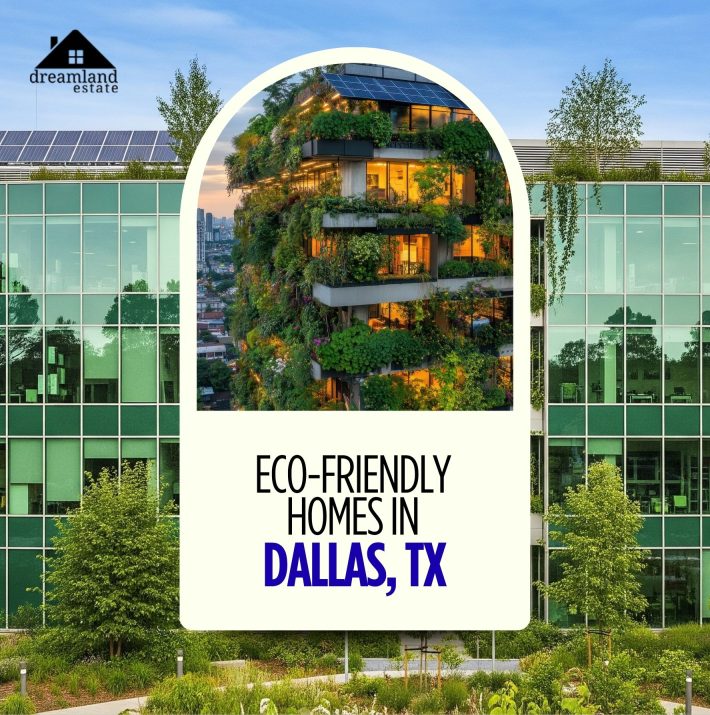
Dallas, Texas, is more than a city; it’s a way of living. From gardens on rooftops in Uptown to eco-friendly homes in Dallas, TX, it is quickly becoming a popular place for homes that mix comfort, innovation, and environmental friendliness.
Whether you work from home and want a friendly neighborhood or you’re an investor looking at the growth of eco-friendly homes in Dallas, TX, this guide will help you learn everything you need to know before buying your next property for your lifestyle.
What Are Lifestyle Properties?

Lifestyle properties are bigger than scale—designed for how you want to live. They are homes designed for wellness, connection, and purpose.
According to real estate professionals, these houses are constructed to enhance physical, emotional, and social well-being.
In Dallas, lifestyle properties may be green residences, smart condos, wellness communities, and certified green neighborhoods.
They may come with features such as home automation, air purification, gym access, rooftop terraces, or even on-site common office space.
What Are The Famous Dallas Spots For Lifestyle Homes?

Dallas is a place with different neighborhoods that are unique with benefits:
- Uptown & Downtown Dallas: Ideal for professionals who want walkable lifestyles, vibrant nightlife, and condo lifestyles with resort features.
- Highland Park and University Park: These are known for their streets with trees, top schools, and luxury eco-friendly homes with large lawns.
- Bishop Arts District: Dallas’ creative hub. It features murals, farmers’ markets, and locally owned cafés. It’s perfect for creative shoppers as well as young families.
- Lakewood: The outdoorsman’s haven with direct White Rock Lake access, hiking trails, and sustainable new buildings.
- Preston Hollow: A tranquil, family-friendly area with expansive green estates and elite eco-luxury homes.
- Oak Lawn & Victory Park: Ideal for social butterflies and remote workers, with mixed-use developments, rooftop bars, and co-working locations.
Neighborhhood Summary: Price Per Square Foot
Here’s a table to help you understand the price per square foot from the neighbourhood in Dallas, TX.
| Neighborhood | Avg Price/Sq Ft | Lifestyle Highlights |
|---|---|---|
| Uptown | $450 | Walkable, modern, social |
| Highland Park | $800+ | Luxurious, green-certified estates |
| Bishop Arts District | $350 | Creative, affordable, eco-forward |
| Lakewood | $500 | Family-friendly, nature access |
| Oak Lawn | $400 | Urban, connected, vibrant |
Introducing the New Dallas Buyer: Lifestyle Types

In helping you to find your ideal match, this is where different buyer types click with specific Dallas neighborhoods:
- Remote Workers: Uptown/Victory Park locations with high-speed internet access, open workspace, and exercise room.
- Pet Owners: Bishop Arts and Lakewood are home to dog parks, pet clinics, and open yards.
- Retirees: Preston Hollow or Trinity Falls, which offer serene settings, health clubs, and user-friendly layouts.
- Digital Nomads: Oak Lawn and Center City, within walking distance from coffee houses, transportation, and co-working offices.
- Multigenerational households: University Park or Viridian, where big houses meet community-centric planning that’s inclusive.
New Development: Planned Living Communities
Dallas is pioneering lifestyle-oriented master plans. Suburbs such as Walsh, Trinity Falls, and Viridian combine natural infrastructure with social interaction.
Resident-only clubs, yoga lawns, community gardens, and even rooftop readiness for solar energy are on the horizon. Sustainable lifestyles are promoted while community spirit is cultivated.
Market Trends: How Does The Ten Years Of Growth Look Like?
Dallas properties have continuously expanded. From 2014 through 2024, house prices increased by over 60%. What is bringing on this expansion?
- Expanding sectors of technology and healthcare
- Flexible remote work is drawing in new citizens
- Increased popularity of Dallas, TX, environmentally friendly houses
Lifestyle developments are growing quickly because buyers want more than just houses; they want communities with a purpose.
What’s In Store For Dallas Market?
In the next ten years, Dallas is expected to remain a strong place for good living. Builders are focusing on homes that promote health and are green certified for sale in Dallas, TX, attracting buyers who care about their health and the environment.
With tax benefits for solar installations and increasing awareness of sustainability, eco-friendly living is becoming normal.
The Comparison Between Dallas And Other Property Hotspots
| City | Median Home Price | Key Advantage | Limitation |
|---|---|---|---|
| Dallas, TX | $475,000 | Balance of luxury and affordability | Rising demand pushes prices upward |
| Austin, TX | $650,000+ | Tech hub with strong culture | Extremely high prices |
| Charlotte, NC | $420,000 | Vibrant job growth | Limited cultural diversity |
| Nashville, TN | $500,000 | Entertainment scene | Smaller job market outside media and tourism |
Buyer Checklist For Investing In Eco-Friendly Homes In Dallas, Tx

When you are making a checklist for Dallas lifestyle home buying, determine what is important to you.
Investigate different neighborhoods and trends within the marketplace. Notice what amenities fit well with a modern, sustainable lifestyle.
Make certain that you read through the regulations of the HOA and consult with a smart home-buying agent to make it easier on yourself.
Here is a concise checklist for homebuyers who aspire to own a lifestyle property in Dallas:
1. Set Your Lifestyle Requirements
Health: Look for locations to reside within walking distance to parks, green space, and exercise facilities.
Yoga and Pilates sessions are usually available in or outside Dallas parks, such as Klyde Warren Park.
Technology: Consider features such as connected home technology with interlinking systems, swift internet, and good connectivity.
Sustainability: Highlight energy-efficient structures with green building ratings like LEED, Energy Star, and Green Globes.
There are some homebuyers seeking houses equipped with solar panels or another renewable energy source.
2. Explore Communities That Align With Your Values.
You can start by exploring the “vibe” and community personality of prospective neighborhoods.
Secondly, you must analyze considerations such as access to workplaces, convenience features, access to transportation, and social/recreation opportunities.
Besides that, you can also consider locations where individuals are united, such as communities around White Rock Lake.
3. Look For Green Certifications.
When considering sustainable buildings, enquire about certifications such as LEED, Energy Star, or Green Globes. The above certifications provide guidelines on environmentally friendly building practices.
The Houston area, for example, uses these certifications, while similar regulations apply to sustainability-based construction across Texas.
4. Confirm Smart Home Features
Before you finalise a property, try to assess existing smart home technologies and future potential for enablement.
When you are on a home hunt, you can consider houses that support modern life, like installations for high-speed internet connectivity.
5. Consider Proximity To Parks, Schools, And Amenities
A property’s location significantly impacts its long-term value and your quality of life. Thus, you must determine how far away from important places you are. This includes
- Schools,
- Supermarkets
- Entertainment places include museums and parks.
Walkable neighborhoods with sidewalk access and proximity to neighborhood shops are extremely popular these days.
6. Investigate Community Policies And Hoa Policies.
You can procure and study with proper attention the Homeowners Association’s rules along with CC&Rs (Covenants, Conditions, and Restrictions.)
In Texas, HOAs can make regulations regarding renting houses, modifications to dwellings, and other related activities. It is essential to know these regulations.
7. Look For Energy-Saving Appliances And Good Insulation.
During a home inspection, confirm energy-saving features that are more than just appliances.
Consider insulation, windows, and the general envelope of a home. Green-conscious homebuyers are often looking for sustainably sourced materials and modes of construction.
8. Research On Market Trends And Future Developmental Plans.
Research the existing neighborhood stock of houses and future proposals for developments or construction that could influence the neighborhood.
Events such as the “Keys to Homeownership: Home Buying Seminar & Market Update” provide education on current Dallas-Fort Worth area real estate markets.
9. Transact With A Lifestyle-Driven Estate Agent
She consulted with someone familiar with both your lifestyle needs and the Dallas marketplace.
There are agents, such as the Team Living in Dallas, Texas, that serve clients who possess unique lifestyle needs.
10. Consider Long-Term Maintenance And Upgrade Plans
Remember the expenses for future upkeep, property taxes, HOA fees, and the home’s insurance.
In as much as you are going to install energy-friendly/intelligent home features, consider such features when you acquire them.
Mistakes To Avoid When Investing In Lifestyle Properties In Dallas, Texas

To avoid pitfalls when investing in lifestyle properties in Dallas, Texas, be mindful of issues like insufficient neighborhood research and overlooking hidden expenses and chic amenities.
It is also essential to be familiar with HOA regulations, obtain professional inspections, and emphasize functionality over fleeting fashion.
1. Ignoring Neighborhood Dynamics
The error: Thinking too much about the property itself rather than its neighborhood community.
A downtrending or mismatched neighborhood can negatively affect your quality of life and your resale value.
How to avoid it: Thoroughly investigate the facilities in the neighborhood, schools, safety statistics, and the local economy.
Consult with those who already reside there to acquire familiarity with the local scene and determine whether it is compatible with your lifestyle.
2. Skipping Environmentally-Friendly Designs
The error: Not considering homes with eco-friendly features that can save a lot of money on bills over time, and can be sold for more money later.
How to avoid it: Visit open houses to see energy-efficient features firsthand. When you inspect, check for energy-efficient windows, proper insulation, solar power installations, and low-flow plumbing fixtures.
3. Underestimated Maintenance Costs
The error: Failing to budget for both routine and unexpected maintenance can significantly impact your money.
Owing upkeep expenses such as HOA charges, insurance premiums, and taxation is another common error.
How to avoid it: Budget pragmatically using calculation methods such as the “1% rule” or the “square footage rule” to estimate your budget reasonably.
1% rule = saving 1% of the home’s value annually
Square footage rule = $1 per square foot annually
In condo cases, factor in expenses for common facility usage as well as common area maintenance.
4. Failing To Check Smart Home Compatibility
The error: Assuming that all smart home devices will be compatible with one another. Purchasing a home that is technologically mismatched or outdated can create a stressful and chaotic encounter.
How to avoid it: Find out which hub your home system employs and ensure it is compatible with the devices and platforms you desire.
Prioritize having good connectivity, such as good Wi-Fi or 5G, so that devices perform well.
5. Omitting Professional Inspections
The error: Skipping inspections to cut costs or gain a competitive edge. This can leave you vulnerable to expensive issues that you may never discover, such as
- Structural damage,
- Poor wiring
How to avoid it: Always hire a qualified home inspector. The inspection report can help you negotiate or keep you from buying an expensive fixer-upper.
6. Not Taking Resale Value Into Account
The error: Buying a house that is extremely personalized to your preferences, which might not be liked by many future homebuyers when you decide to sell your home.
How to avoid it: Take into account factors that always appreciate property value, like
- Location,
- School quality,
- Amenities
While your own preferences are important, also keep future marketability in mind.
7. Overpaying For Trendy Features
The error: Spending money on short-term trends instead of on substantial elements. The popularity of short-term trends like a specific countertop or a certain backsplash can drop someday. So you can’t get that money back from it.
How to avoid it: Spend money on conventional, high-grade materials that last well. Consider the central parts of the house that yield the highest long-term value, such as smart technology or energy improvements.
8. Failing To Research HOA Regulations
The Error: Disregarding HOA rules that can prohibit you from making modifications you want, having certain pets, or even parking specific automobiles.
How to avoid it: When you are reviewing everything, request a copy of the following:
- Covenants,
- Conditions,
- Restrictions (CC&Rs) from your seller,
- Your agent
- Your county recorder’s office.
Read them carefully to ensure your lifestyle is compatible with community restrictions.
9. Excluding Commute And Accessibility
The error: Paying too much attention to the house itself and not enough to problems with a long commute or inadequate access to basic amenities.
How to avoid it: Consider your proximity to workplaces, educational establishments, healthcare facilities, and transportation routes. It can compromise your work-life balance as well as your well-being.
10. Prioritizing Appearance Over Functionality
The error: Selecting a home because it is pretty without consideration of whether its configuration and amenities will satisfy your daily requirements.
How to avoid it: Review how the property operates and assess its usability. Consider how you and your household are going to reside in it, rather than concentrating on visual appeals alone.
What Are The Green Certified Homes For Sale In Dallas TX?

Sustainable houses in Dallas are not a fad; they represent a lifestyle transition to comfort, wellness, and sustainability.
Here is a close examination of sustainability with style in Dallas neighborhoods, as well as what you can expect when house hunting for your desired green home.
Little Forest Hills
First comes the Little Forest Hills. It is Dallas’s go-to place for individuals who are concerned with sustainability.
It is such a peaceful spot in the city. The neighborhood itself is famous for its beautiful buildings and community gardens.
Moreover, it recently expanded with additional green initiatives, such as neighborhood recycling efforts and native landscaping.
It attracts creative employees and nature enthusiasts who enjoy a peaceful, environmentally friendly environment.
Bishop Arts District
Bishop Arts is famous for its culture and for being environmentally friendly. The farmers’ markets and local shops are a routine aspect of life here.
Moreover, the area is easily walkable, helping individuals shop locally and reduce their carbon footprint.
There are energy-efficient condos nestled behind vibrant shops with busy cafés that serve organic cuisine.
Lak
Lakewood is located close to White Rock Lake and mixes beautiful nature with modern, eco-friendly practices.
You can find homes powered by solar energy, gardens that grow organic food, and building materials that are good for the environment.
Also, the community has many parks and trails, which make spending time outdoors an important part of life here.
Oak Cliff
Oak Cliff is famous for its grassroots attempts at sustainability. The neighborhood’s revitalization has resulted in
- Numerous environmentally friendly small shops,
- Rainwater harvesting installations
- Clean-up initiatives for the community.
It’s a fantastic neighborhood for those interested in community participation, art-centricity, and environmentally friendly houses.
Uptown And Victory Park
For those who like city life without losing sight of their eco principles, Uptown and Victory Park come through with style.
You can find bicycle-friendly streets, rooftop gardens, and energy-efficient high-rises. This is why young professionals flock to these neighborhoods.
Moreover, integrated smart lighting, solar-ready buildings, and access to dining and entertainment complete the package.
What Are The Price Ranges For Eco-Friendly Homes In Dallas, TX?
If you are a first-time home buyer or luxury buyer, Dallas is home to green certified homes for sale in Dallas TX! Here are a few options for you:
Entry-Level Green Homes ($250,000–$450,000)
Firstly, in Pleasant Grove, Casa View, and Oak Cliff, these houses are energy-efficient, featuring improved insulation, advanced thermostats, and drought-tolerant landscaping.
Mid-Range Sustainable Homes ($450,000–$800,000)
Secondly, Lakewood and Bishop Arts have modern homes with solar panels, eco-friendly materials, and smart home technology.
Luxury Green Homes ($800,000–$5M+)
Thirdly, you can consider Highland Park, Preston Hollow, and University Park for LEED-certified homes with geothermal heating and cooling, graywater reuse, and home automation.
What Are The Key Features Of Eco-Friendly Homes In Dallas, TX?
Dallas’ current environmentally friendly houses offer contemporary comfort without harming the planet.
These features include:
- Solar panels for renewable energy.
- Advanced insulation.
- Passive design elements, such as strategic window placements, maximize natural light.
- Minimise heating and cooling needs.
They also include smart technology for energy usage and green landscaping, incorporating drought-resistant native plants.
Moreover, these features can create maximum comfort, healthy homes with lower utility costs, and reduced carbon footprints.
Furthermore, you can consider features such as ENERGY STAR-recommended heating and cooling features and appliances, solar panels, Low-E windows, and good insulation for improved climate control.
On the inside, you can expect to see sustainable materials such as bamboo floors and reclaimed wood combined with low-VOC paints that contribute to improved indoor air quality.
Most greenhouses employ water-conserving technologies, such as smart sprinkler systems, low-flow devices, and rainwater collecting installations.
Landscapes are usually xeriscaped with native Texas flora to conserve water and reduce upkeep.
Luxury houses go one step further by providing evidence of certifications such as LEED or Green Globes, indicating that these houses meet recognized sustainability benchmarks.
The Buying Guide Of Green House: Cheat Sheet

Begin your Dallas, TX lifestyle property adventure by finding a home that suits your needs.
If you are concerned with green design, advanced technology, or community liveliness, then follow these instructions to begin searching for green certified homes for sale in Dallas TX.
- Establish your priorities: Firstly, you must select which is most important: space, sustainability, technology, or community environment.
- Work with experts: Secondly, you can collaborate with agents familiar with Dallas, TX, and environmentally friendly houses to find energy-efficient homes with intelligent designs.
- Look at neighborhoods: After that, you can walk through neighborhood streets, view open houses, and participate in neighborhood events to grasp the lifestyle atmosphere of regions.
- Check out green financing: Again, you can look for mortgages and rewards that help pay for eco-friendly upgrades like solar panels or water-saving systems.
- Think about the future: Lastly, you must pick a property that provides not just immediate comfort but good living quality, ease of access, and profit potential.
Purchasing a lifestyle property in Dallas is not only about acquiring property. It is about selecting a healthier, more balanced future.
From chic high structures in Dallas’s Arts District to serene solar houses in Lakewood, Dallas offers it all when it comes to lifestyle properties.

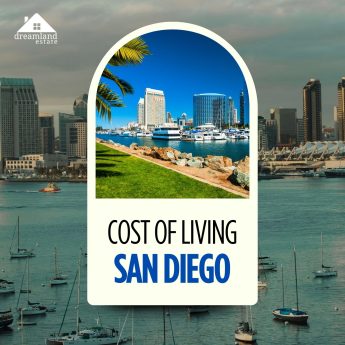
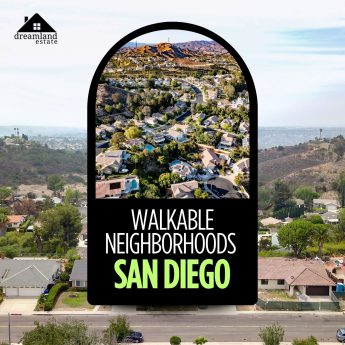
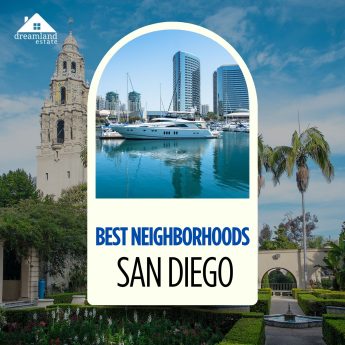

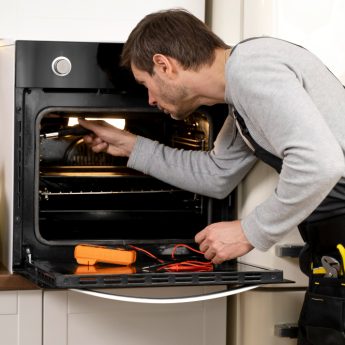
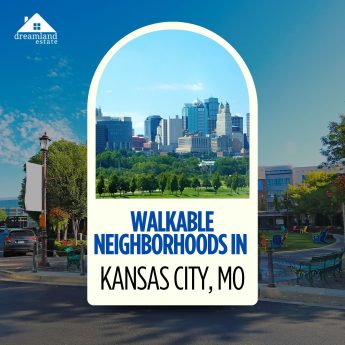


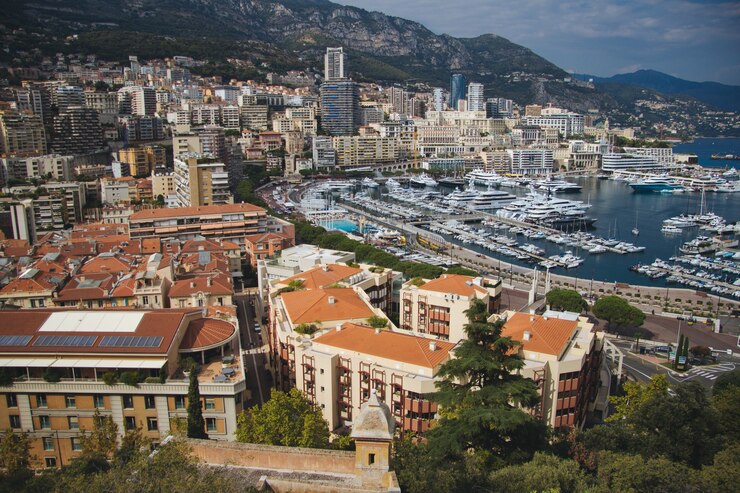

Leave A Reply